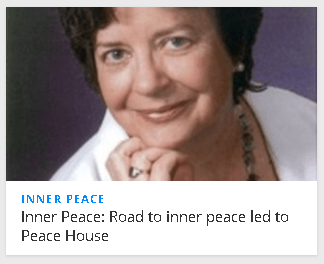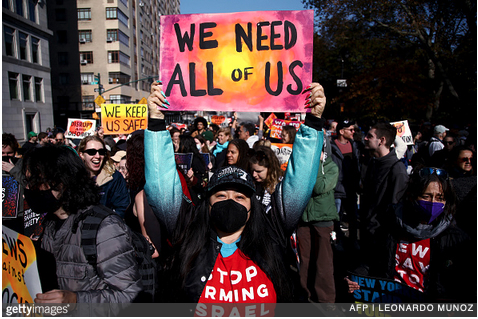 Living in rural Calaveras County, California in 1980, surrounded by nature in the Sierra foothills, I enjoyed a simple life. There was a certain inner peace to that life, but it was also isolating. I listened to the Bay Area’s Pacifica Radio and realized that there was a cultural revolution going on. I became spiritually and politically restless.
Living in rural Calaveras County, California in 1980, surrounded by nature in the Sierra foothills, I enjoyed a simple life. There was a certain inner peace to that life, but it was also isolating. I listened to the Bay Area’s Pacifica Radio and realized that there was a cultural revolution going on. I became spiritually and politically restless.
I left my monkish cold-water cabin in the Mother Lode and headed to San Francisco and became involved in legislative efforts to certify Direct Entry Midwives. This led to organizing protests against wars in Central America and the Gulf War outside of Concord Naval Weapons Station.
Many midwives were active in both movements, feeling moral outrage as well as solidarity with Central Americans and Middle Eastern families who were affected by U.S. involvement in their wars. At that time, I had become a mother. Pictures of dead mothers and babies in El Salvador, Guatemala and Nicaragua reminded me of similar photos published during the war in Vietnam. I could not look at the pictures without deep moral anguish.
By the time I moved to Oregon, I had fully revived my ‘60s awareness about U.S. interventionist foreign policies and was connected to many others who were actively educating and demonstrating against the work of the School of the Americas and other arms of the U.S. military.
For many of us, the question we face is: How can we find inner peace without engaging with the outer world and our collective human condition?
There is little room to hide from the collective situation that disturbs our mind and our hearts. We will not survive long or well if we simply scurry out for supplies and return to crawl under our security blankets.
We see and are affected the whole enchilada: A litany of materialism and greed of the 1 percent at the top that is deeply affecting the less well-funded. Hate speech, increased militarism, skyrocketing rents; prejudice; decreased educational opportunities, poor health care, homelessness and food shortages all press on our communities. If we are not directly affected, we are aware that those around us are suffering.
How do socially concerned people find inner peace in this state of affairs? Meditation with others; friends; a helping hand or a support group may or may not be enough. There is a saying: “No Peace without Justice.” Cultivating a culture of social action can make an impact and lessen injustices. Applying nonviolent strategies and peaceful organizing can cause powerful solutions and voter-based change.
Inner peace at Peace House
At the corner of South Mountain Avenue and Ashland Street, diagonally across from Southern Oregon University, stands the home of Peace House and South Mountain Friends Meeting (SMFM).
What does a culture of peace look like inside this building?
Marjorie and Ogden Kellogg Sr. helped found the Ashland Quaker worship group in the 1960s that later became SMFM in Ashland. Marjorie also helped start Peace House. The two groups have been entrusted with a place to be together in community: a platform for social change and spiritual growth. We share ownership of the building but are separate nonprofits.
Both organizations are based in American spiritual and social justice traditions of nonviolent resistance to tyranny, slavery and militarism, and supporting equal rights for all people. Luminaries such as Martin Luther King Jr., Joan Baez, Gandhi, Dorothy Day and the Berrigan Brothers, Phil and Daniel, inform our philosophy of nonviolence.
Part of the peaceful beauty inside this building is that we can also host many other groups who do not have their own peaceful space.
You will find a large meditation room, a nurturing kitchen and a modest Quaker library upstairs; a peace library and a small Buddhist library downstairs, along with two smaller meeting rooms and the Peace House office.
Four rental rooms are offered at a nominal fee for all who seek a place to be in community. A quiet and diverse procession of visitors and renters are enjoying this opportunity. Examples are: a Buddhist group, a women’s writers’ group, a Quaker Meeting on Sundays; a monthly Friends’ Song Circle; an Ad Hoc Committee to examine policing accountability; and private counseling sessions. There are also the occasional anniversary celebrations or memorials.
Uncle Food’s Diner, a Tuesday hot meal platform offering several other social services, is co-sponsored by Peace House and the Methodist Church. It is coordinated here. Peace House holds educational films, discussion groups and meetings in the building or sometimes at SOU. We also produce a bi-monthly calendar featuring activist events and projects in Southern Oregon, stitching together a wide variety of social concerns. (You can subscribe for free at www.peacehouse.net and follow local activities weekly.)
Peace House has also served as the sponsor for several fledgling organizations until they could become nonprofits in their own right. The house Marjorie Kellogg left behind is being put to good use!
There are deer and squirrels that bless us with their presence amongst the surrounding trees, providing a certain balance to our inner peace. This is a good place to be! I feel better, now, watching our community take big strides to do our inner work while advocating for nonviolence, social justice and an end to the militarization of our culture.
Elizabeth V. Hallett is the program director at Peace House, where she first worked from 1993-1997 before becoming program manager at the Ashland Community Hospital Respite Center. After its closure, she went into private practice as a senior care consultant and has held support groups for families living with Alzheimer’s for 20 years. She returned to Peace House in 2016 and is in training with the Berkeley Interfaith Chaplaincy Institute in Spiritual Direction.


